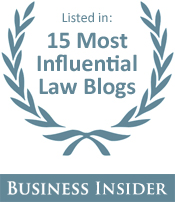Whistleblower Law Blog
MSPB Holds that Hostile Work Environment is an Adverse Action under the Whistleblower Protection Act
On September 3, 2015, in Savage v. Dep’t of the Army, the Merit Systems Protection Board held that the creation of a hostile work environment is a prohibited personnel action under the Whistleblower Protection Act. The Board, in Savage, remanded an initial decision in part because the administrative judge did not consider creation of a hostile work environment a prohibited action under the WPA.
The Whistleblower Protection Act provides relief to federal whistleblowers who 1) disclose activity they reasonably believe is a violation of law, rule, or regulation, and 2) experience a prohibited personnel action as a result. The WPA defines twelve prohibited personnel actions, including termination, demotion, and transfer. The twelfth is a catchall for “any other significant change in duties, responsibilities, or working conditions.” The Savage decision placed hostile work environment claims within this category of prohibited personnel actions.
Tommie Savage was a supervisory Contract Specialist with the U.S. Army Engineer and Support Center in Huntsville, Alabama who received excellent performance ratings throughout her time in the job. Savage reported activities she believed to be illegal, and her disclosures led to a May 24, 2007 internal audit that the MSPB found validated her concerns.
In June 2007, Savage filed a formal equal employment opportunity complaint, alleging she had been subjected to harassment and a hostile work environment based on race and sex. She settled this claim and accepted a transfer to a nonsupervisory Contract Specialist role effective November 11, 2007. In December 2007, she received a performance appraisal with an overall rating of 3 (on a scale of 1 to 5).
Beginning in June 2008, Savage disclosed additional regulatory violations. On August 17, 2008, she and her boss had a heated discussion regarding her disclosures. The following day, Savage saw a psychologist who recommended she go on leave. Her supervisor approved the leave. This leave period was the first of several physician-recommended leaves for Savage. Her supervisor approved FMLA leave from December 6, 2008 to March 5, 2009. In the same month her FMLA leave began, her supervisor again issued her a performance appraisal with an overall rating of 3.
After several additional leave requests, including a request to take leave without pay (LWOP), Savage’s supervisor placed Savage on absent without leave status effective April 2, 2009. On April 3, 2009, Savage filed a formal EEO complaint alleging a hostile work environment based on reprisal for the settled 2007 EEO complaint and another EEO complaint she filed in 2008. She named her supervisor as the discriminating official and cited the denial of LWOP as one of the retaliatory actions. The agency issued a decision finding no discrimination.
On September 14, 2009, Savage’s supervisor proposed Savage’s removal, citing the following reasons: 1) absence without leave, 2) excessive absences, and 3) unavailability to report for duty with no foreseeable end. The agency removed Savage, and she filed another EEO complaint. On April 8, 2011, the agency issued a decision finding no discrimination.
Savage appealed her removal on May 6, 2011, arguing that it stemmed from a hostile work environment. In September 2011, she requested that her appeal be dismissed without prejudice so that she could file a whistleblowing retaliation complaint with the Office of Special Counsel. The administrative judge granted her request. After proceeding through the OSC, Savage filed an “individual right of action,” alleging that agency officials had retaliated against her for reporting contracting fraud. She also refiled her removal appeal. The administrative judge joined the two appeals.
The MSPB ruled that on remand the administrative judge should evaluate Savage’s claim that the alleged hostile work environment constituted a prohibited personnel action under the Whistleblower Protection Act.
In Savage, the MSPB also clarified its application of the analytical framework established in Mt. Healthy City Sch. Dist. Bd. of Educ. v. Doyle, 429 U.S. 274 (1977). The Board announced that in cases involving allegations of discrimination and retaliation not covered by the WPA, the MSPB will consider 1) whether protected conduct was a motivating factor in the contested action, and, if so, 2) whether the employer can show by a preponderance of the evidence that it would have taken the same action even if the protected conduct had not taken place.
Tagged: Whistleblower Laws (Federal), Whistleblower Protection Act (WPA)



